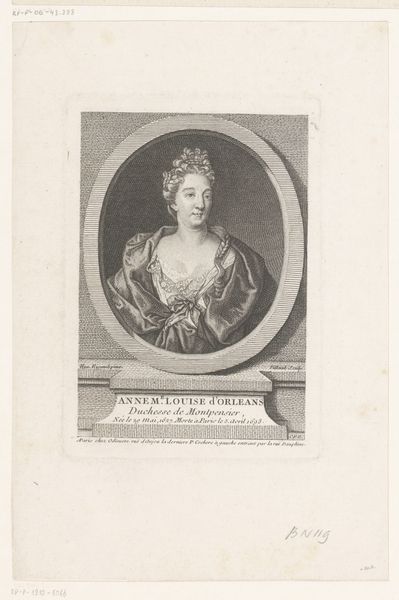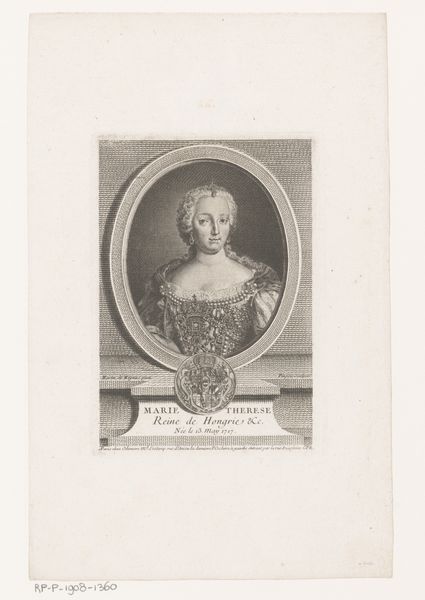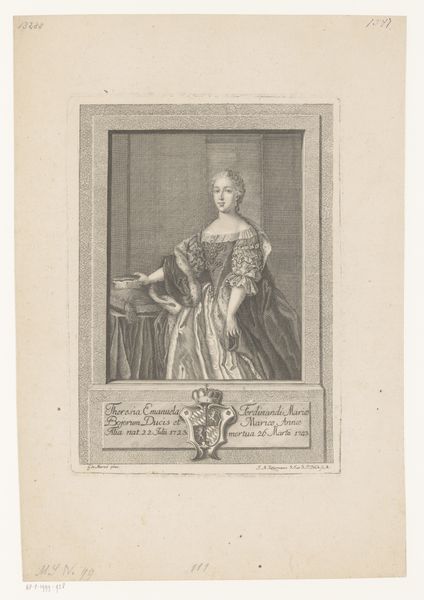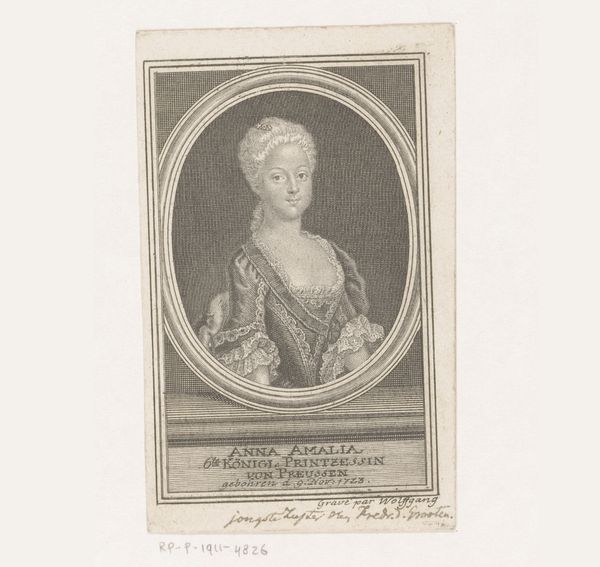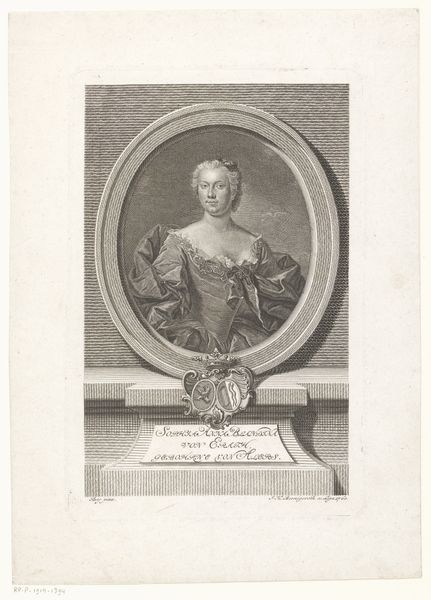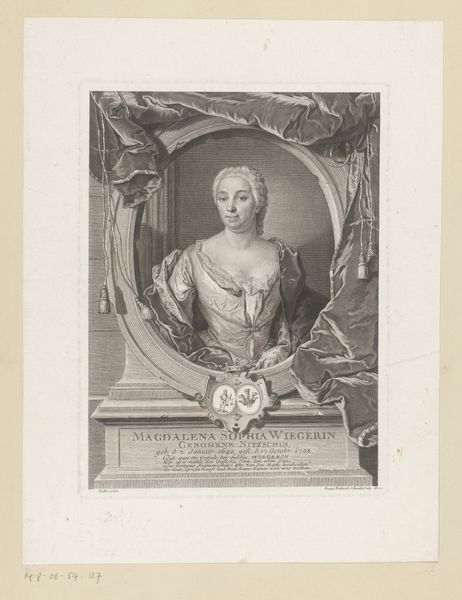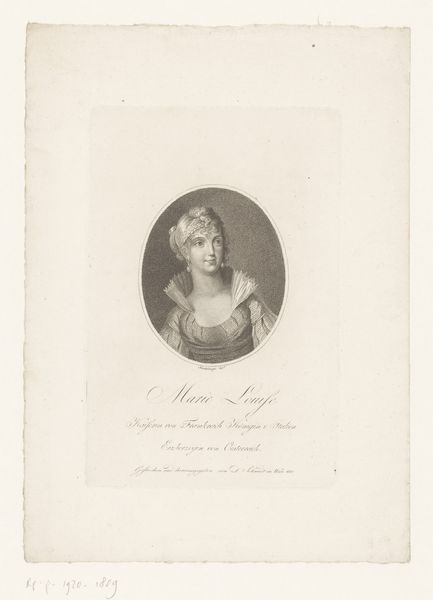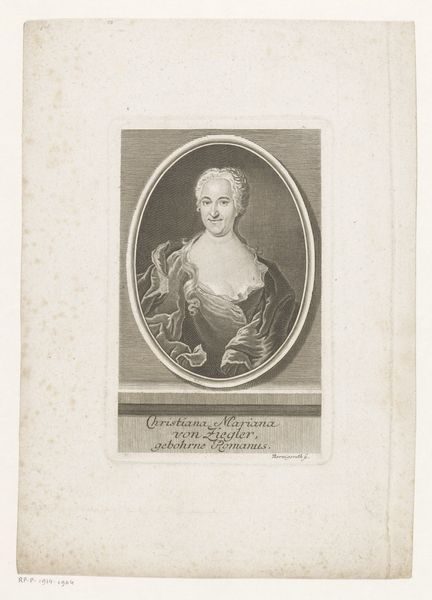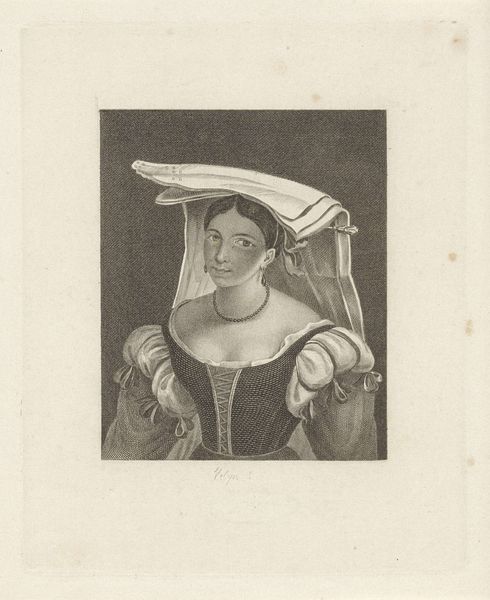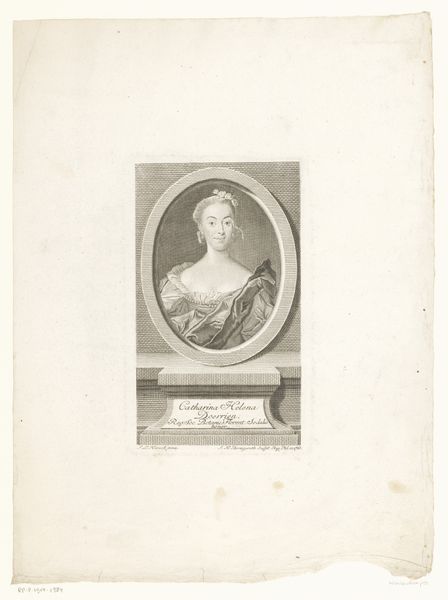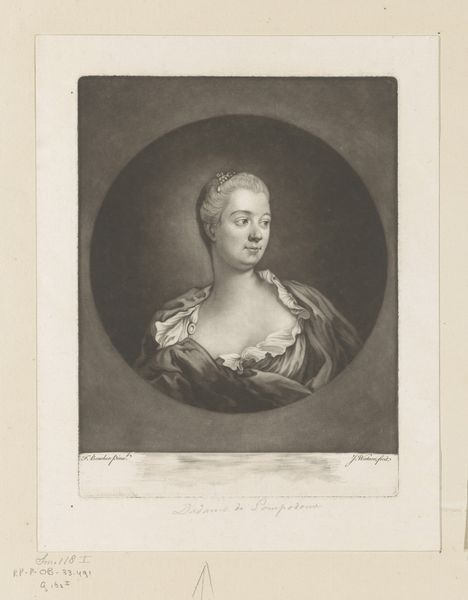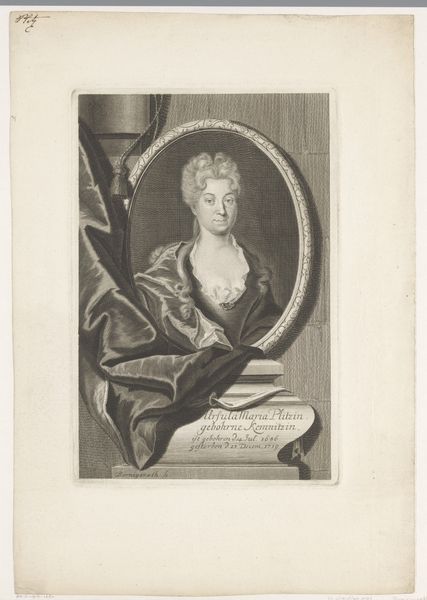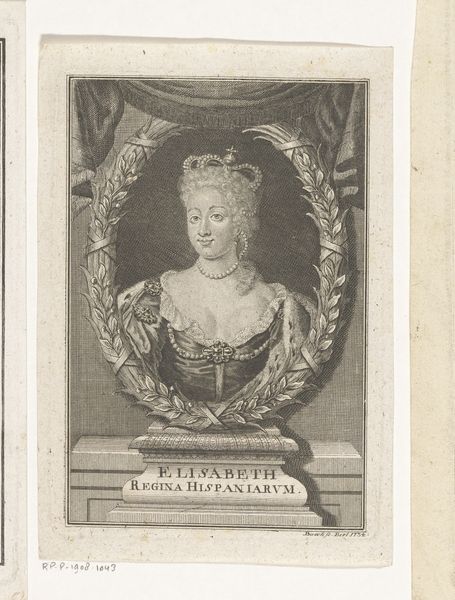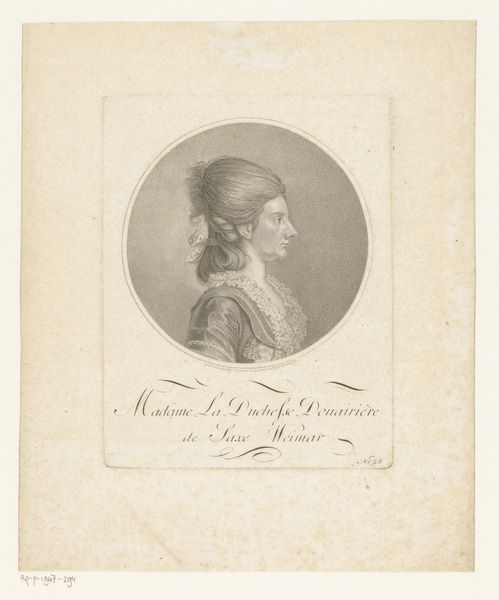
engraving
#
portrait
#
medieval
#
11_renaissance
#
line
#
history-painting
#
engraving
Dimensions: height 155 mm, width 111 mm
Copyright: Rijks Museum: Open Domain
Curator: Here we have Sèbastien Pinssio's "Portret van Maria van Bourgondië," an engraving from somewhere between 1755 and 1765. Editor: Immediately, I'm struck by the formality. She’s encased, almost entombed, in this perfect oval. Is it just me, or does she look… resigned? Curator: The oval is, structurally, crucial. It frames and focuses attention, emphasizing the lines of her face, the precise details of her headdress, and necklace. The formal inscription adds to the hierarchical presentation of noble identity, which echoes the broader interest in lineage so apparent throughout the Renaissance and Baroque periods. Editor: Oh, absolutely. The guy who engraved this—Pinssio, right?—was very much making a statement about rank. But look at the details: the shading around her eyes suggests weariness, like the weight of the crown or, I don’t know, history itself. The light catches her face but doesn’t seem to animate it with life. It’s a mask, a façade, this image—carefully etched but somehow empty. Curator: Well, "empty" perhaps suggests an oversimplification of iconographic functions. Engravings such as this are essentially copies used to spread idealized, coded information about personages such as the then long-dead Mary of Burgundy. Line and hatching work meticulously together here, notice the very precisely controlled light-dark effects creating subtle three-dimensionality, designed to evoke social standing in very clearly legible terms. Editor: Legible, sure. But art that only spells out rank becomes, for me, something less than art. Does it convey a sense of interiority or individual personality? No. Does it skillfully present an historical moment from an unexpected perspective? It does not. But those clear, readable elements? Well, that’s a story the engraver consciously decided to print, again, and again. Curator: Indeed. Pinssio and his contemporaries believed strongly in that specific story, a symbolic language clearly legible for the cultivated. Editor: And maybe we decide how to read it all differently now, centuries removed from those original meanings. Interesting, really.
Comments
No comments
Be the first to comment and join the conversation on the ultimate creative platform.
